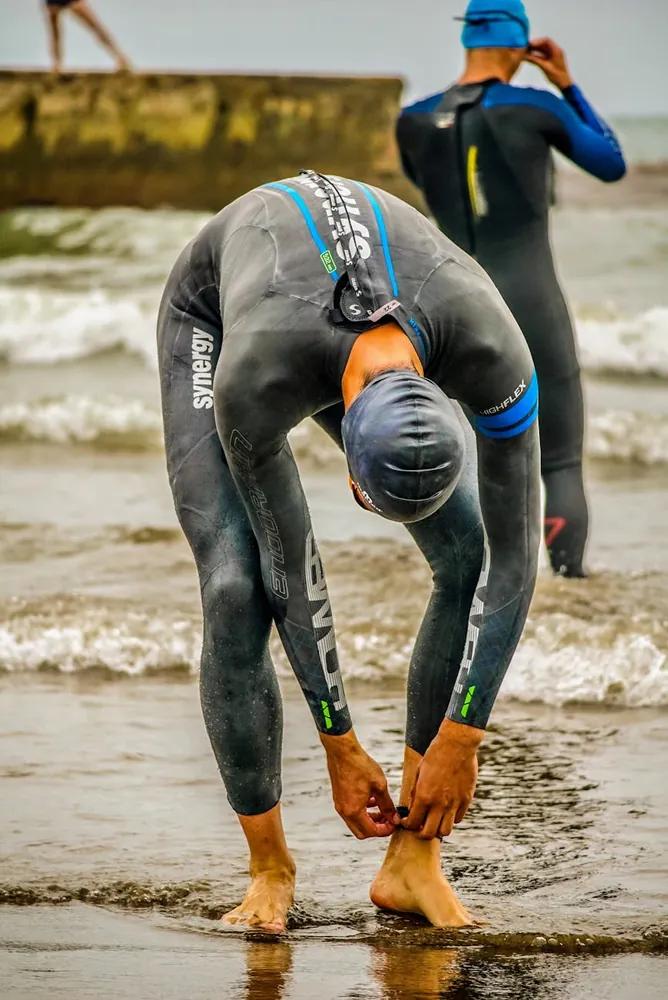Personalized Training Plans for Successful Local Triathlon Preparation

Understanding the Basics of Triathlon Training
Preparing for a local triathlon can be both exciting and daunting, especially if it's your first time participating. A triathlon combines swimming, cycling, and running into one challenging event, and requires a strategic training plan to ensure you are ready for each segment. The key to success is personalization—creating a training plan that aligns with your current fitness level, available time, and specific goals.
Assessing Your Starting Point
Before diving into a rigorous training schedule, it's important to assess where you currently stand in terms of fitness. This involves evaluating your proficiency in swimming, cycling, and running separately. Consider the following steps:
- Swimming: Head to your local pool and time yourself swimming a few laps. Note your comfort level in the water and any areas needing improvement, such as breathing techniques or endurance.
- Cycling: Take your bike out on a familiar route and measure your average speed over a set distance. Pay attention to your stamina and ease of maintaining a steady pace.
- Running: Go for a short run around your neighborhood, noting both your time and how you feel during the run. Focus on your pacing and any joint discomfort you might experience.
Setting Realistic Goals
With your initial assessment in hand, set realistic goals for your triathlon preparation. These goals should be specific, measurable, achievable, relevant, and time-bound (SMART). For instance:
- Improve swim lap time by 15% within two months.
- Increase cycling distance by 20 miles by the end of the training period.
- Complete a 10K run comfortably without stopping.
Remember to align these goals with the specifics of the local triathlon you plan to enter. Research the event's course distances to tailor your objectives accordingly.
Designing Your Personalized Training Plan
A well-rounded training plan encompasses all three disciplines while incorporating rest and recovery. Here's a structured outline to get you started:
1. Weekly Training Schedule
Your week should typically include sessions dedicated to each discipline, along with cross-training and rest days. Here’s an example of how to organize your week:
- Monday: Rest day or light yoga for flexibility.
- Tuesday: Swim session focused on technique drills and endurance.
- Wednesday: Cycling workout with intervals to boost speed.
- Thursday: Run focusing on building distance at an easy pace.
- Friday: Cross-training such as strength training or Pilates.
- Saturday: Long swim session to build endurance.
- Sunday: Brick workout (bike followed by run) to mimic race day conditions.
2. Progress Tracking
Keep a training journal or use fitness apps to log your workouts, distances, times, and how you felt during each session. This will help you track progress and adjust the plan as needed.
Nutritional Considerations
A successful triathlon performance relies heavily on proper nutrition. Focus on balanced meals that provide ample carbohydrates for energy, proteins for muscle repair, and healthy fats for sustained energy. Stay hydrated by drinking plenty of water throughout your training days, and consider electrolyte drinks during longer sessions.
Tackling Common Challenges
As with any rigorous training plan, challenges are inevitable. Here are a few common obstacles and how to overcome them:
- Lack of Motivation: Find a training partner or join a local triathlon club for support and camaraderie.
- Injury Prevention: Incorporate warm-ups, cool-downs, and stretching into every session to prevent injuries.
- Time Management: Use early mornings or lunch breaks for workouts if evenings are too busy.
A Sample Training Scenario: Preparing for the City Sprint Triathlon
Imagine you're preparing for the City Sprint Triathlon, which includes a 500-meter swim, 20-kilometer bike ride, and a 5-kilometer run. Based on this scenario, here's how a personalized plan might look over three months:
Month 1: Building Base Fitness
- Focus on steady aerobic sessions—easy-paced swims, rides, and runs.
- Add one session per week dedicated to each discipline's technique improvements.
Month 2: Increasing Intensity
- Introduce interval training sessions to improve speed and endurance.
- Begin brick workouts bi-weekly to simulate transition from cycling to running.
Month 3: Race Simulation
- Perform race-distance workouts at least once per discipline weekly.
- Continue with brick workouts but reduce overall volume leading up to race day (known as tapering).
This structured approach ensures you're well-prepared for each leg of the triathlon while allowing adequate recovery time. Remember that consistency is key; small adjustments along the way based on how you feel will make a big difference in reaching the finish line with confidence.
 BuzzArticle
BuzzArticle